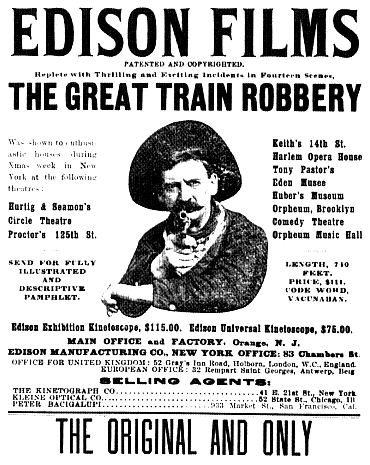The Great Train Robbery (1903)

A group of bandits stage a brazen train hold-up, only to find a determined posse hot on their heels.
Director: Edwin S. Porter
Stars: Gilbert M. 'Broncho Billy' Anderson, A.C. Abadie, George Barnes
Studio: Edison Films
Genre: Western
A massive success that served as one of the vehicles that would launch film as a medium into mass popularity. From the very beginning, people proved they love their Wild West violence. Cinematography wise, there is some incredible stuff in here! There is a Panning Shot (wow)! For those that may not know, a Panning Shot is a camera movement where you pan the camera from right to left. Better than just this single shot, Director Edwin S. Porter uses a panning shot to reveal to the audience that there have been some horses off screen that the robbers can use to escape. This is an enormous leap in filmmaking as Porter is using the camera to tell the story. Imagine a film where the camera is static and all the information is readily available to the viewer. Now imagine a film where information is slowly revealed piece by piece keeping the audience on their toes. No offense to Méliès, but I found this movie far more interesting to watch than A Trip to the Moon.
Another incredible cinematographic technique pioneered in this picture is Parallel Action. Parallel action is when a film does a cross cut from two events that are occurring simultaneously. Once again this is a technique that allows for greater story telling freedom.
And of course the most visible narrative technique, the star of the show, is the fourth wall break at the end where a rogue cowboy appears and shoots at the audience. People of the time were unfamiliar with moving pictures and how exactly they worked, so you can imagine all the chaos that ensued from unsuspecting audience members ducking out of the way of the perceived incoming shots.